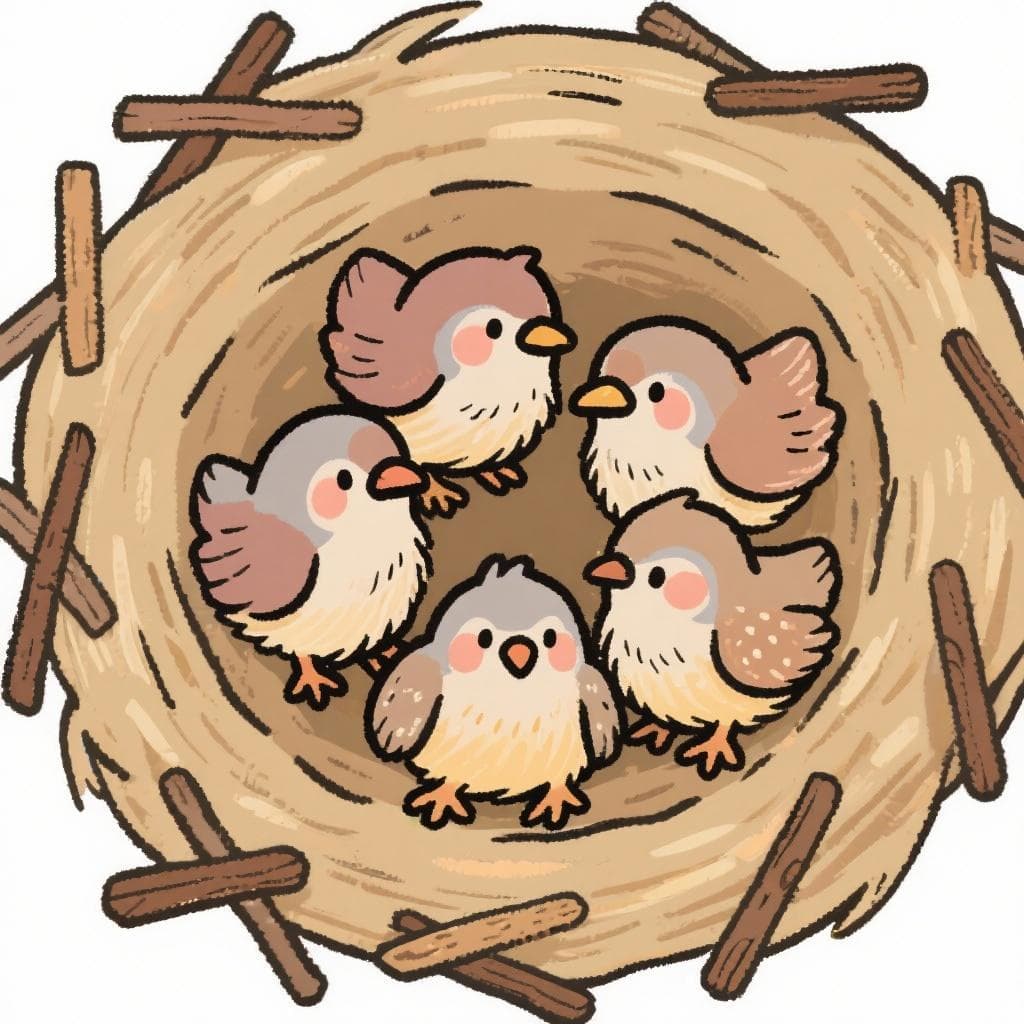Un nido de perdigones, tiene cinco perdigoncitos.
un NI-do de per-di-GO-nes, TYE-ne SIN-co per-di-gon-SI-tos
A nest of partridges has five little partridges.
🔊 Listen & Practice
Start with slow speed to master pronunciation, then gradually increase to challenge yourself.
🎨 Visualization

A nest of partridges with five little partridge chicks. Can you count them all quickly in Spanish?
🎯 Pronunciation Focus
The Soft 'd' Sound
/ð/In Spanish, when 'd' comes between two vowels (like in 'nido'), it softens. Touch your tongue to the back of your top teeth and let the air flow, almost like the 'th' sound in the English word 'the'.
Consistent Vowel Sounds ('i' and 'o')
/i/, /o/This phrase repeats the 'i' and 'o' sounds. Practice keeping them pure and short. The Spanish 'i' is like the 'ee' in 'see', and the 'o' is like the 'o' in 'go', but clipped short without the 'w' sound at the end.
📝 Practice Breakdown
Start here. Focus on the soft 'd' in 'nido'. It should sound gentle, almost like the 'th' in 'the'.
Notice how the 'i' sound in 'tiene' and 'cinco' is the same quick, sharp sound. Keep it consistent.
This is the big word! Break it down: per-di-gon-ci-tos. The 'ci' sounds like 'see'. The challenge is saying it smoothly after the first part.
Key Words in This Tongue Twister:
📚 Background
This is a simple and charming tongue twister, often used with children to practice basic sounds and rhythm. Its focus on the repetition of simple syllables makes it a great warm-up for pronunciation practice.
❌ Common Pitfalls
Using a Hard English 'd'
Mistake: "Pronouncing the 'd' in 'nido' like the hard 'd' in the English word 'dog'."
Correction: When a 'd' is between vowels in Spanish, it becomes very soft. Lightly touch your tongue to the back of your top teeth and let air pass. It's a much gentler sound.
Mispronouncing 'cinco'
Mistake: "Saying 'cinco' with a hard 'k' sound ('kin-ko') or an English 's' sound ('sin-so')."
Correction: In most of Latin America, the 'c' in 'cinco' sounds like an 's' ('seen-ko'). In most of Spain, it's a soft 'th' sound ('theen-ko'). Both are correct, but it's not a 'k' sound here.
🌎 Where It's Used
General Spanish
This tongue twister is known throughout the Spanish-speaking world as a simple exercise for children and learners.
🔗 Related Tongue Twisters
The Partridge Nest Challenge
Try saying it five times in a row, once for each little partridge! Can you do it without getting your 'nidos' and 'perdigones' mixed up?
🏷️ Tags
Frequently Asked Questions
What does 'perdigoncito' mean?
It's the diminutive form of 'perdigón' (partridge). The '-cito' ending makes it mean 'little partridge' or 'baby partridge'. Using diminutives like this is very common and affectionate in Spanish.
Is the 'c' in 'cinco' always an 's' sound?
In most of Latin America, yes, it's an 's' sound (this is called 'seseo'). In most of Spain, it's pronounced with a 'th' sound (like in 'think'). Both are perfectly correct, just regional differences!


